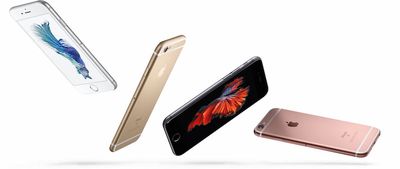Despite India's overall healthy growth in the smartphone market -- currently sitting as the third largest behind China and the United States -- Apple is having a tough time gaining ground in the country. According to a new report from Strategy Analytics, Apple saw a drastic percentage dip in iPhone users from 2015 to 2016, with 35 percent fewer iPhone devices sold this year. Earlier in May, Apple CEO Tim Cook admitted iPhones are too expensive in India, potentially harming the company's sales figures as it tries to grow.
In its new report, the market research firm said that Apple sold just 800,000 handsets in Q2 2016, while in the same year-ago quarter the company sold 1.2 million units. These deflating sales numbers rippled into Apple's operating system marketshare in India, essentially getting halved down from 4.5 percent in Q2 2015 to 2.4 percent in Q2 2016. Director of Strategy Analytics, Woody Oh, pointed out a few ways Apple might go about course correcting its current struggles in the country, including the ongoing saga of boosting its retail presence in India.

“Apple iOS fell 35 percent annually and shipped 0.8 million smartphones in India in Q2 2016. Apple’s smartphone marketshare has halved from 4 percent to just 2 percent in India during the past year. Apple iOS will need to reduce iPhone pricing to cheaper levels, attract more operator subsidies and enlarge its retail presence through Apple stores or online channels if it wants to regrow significantly in the future.”
Apple Stores aren't as ubiquitous in India as they are in other parts of the world thanks to the country's rules on foreign direct investments, which required 30 percent of goods sold by a foreign company to be manufactured or produced within India. Thankfully, after a ruling in June cleared the way for companies to circumvent that law, Indian Prime Minister Narendra Modi set a precedent by granting Apple a three-year extension on the strict local-sourcing rule, due to its single-brand retail company status selling "cutting-edge technology." Companies similar to Apple are expected to get similar treatment.
While the relaxation of these rules should help Apple moving forward, it doesn't change the fact that Android remained the dominant force in India this year. In total, 29.8 million Android smartphones shipped within the country in Q2 2016, growing from 23.2 million in the same quarter last year. Similarly, Google's Android operating system remained the dominant force in the Indian mobile market with a record 97 percent hold for the quarter, increasing from 90 percent a year ago.
Apple's retail future in the country might be turning around, but the company is still hitting smaller roadblocks on its route to increasing sales figures in India. In May, Commerce and Industry Minister Nirmala Sitharaman ruled "not in favor" of a proposal laid out by Apple to sell used iPhones in the country. Thanks to Apple's repeated growth frustrations, Strategy Analytics said that Android's domination of the Indian smartphone market "looks unbeatable right now, due to its deep portfolio of hardware partners, extensive distribution channels, and a wide range of low-cost apps like Gmail."























